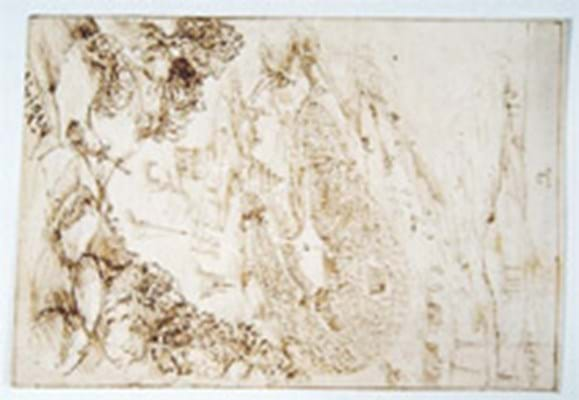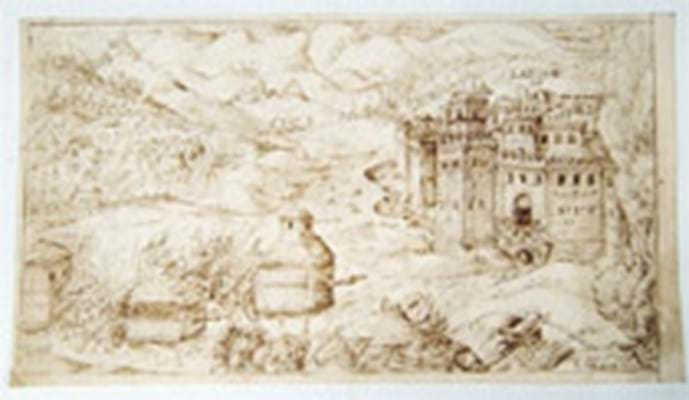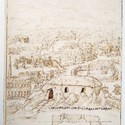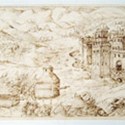The paper fragments were a set of brown ink illustrations from a 16th century Italian translation of Vitruvius. Illustrated on both sides, they included views of Alexandria, Athens and Rome as well as more detailed plans of ancient buildings.
They were consigned by a provincial dealer and given a £4000-6000 estimate.
To research them, the auctioneers showed them to the Ashmolean Museum from where they were referred to Ian Campbell, the Professor of Architectural History at Edinburgh College of Art. With his help, the eight fragments, which appeared to be by the same single hand, were lotted together and given an extended entry in the catalogue.
Attracting a number of bidders in the room on top of the interest on the phone, they finally sold to an anonymous trade buyer at £165,000 plus 15 per cent premium.
Vitruvius's Ten Books of Architecture, written c.30-20BC, is the most prominent classical text on Latin and Greek architecture. Translations of the work were of critical importance in the Renaissance as architects strove to reach the heights of the classical world.
The first Italian translation of Vitruvius with illustrations like these was produced in Verona in 1511 by Fra Giovanni Giocondo. The drawings at Mallams clearly followed on from either this edition or one of its successors.
But the use of perspective in the plans for the Roman temples suggested a link to Baldassare Peruzzi (1481-1537), who is said to have begun a commentary on Vitruvius during his lifetime. He experimented with similar plans in his project drawings for the new St Peter's.
His pupil, Sebastiano Serlio, gives instructions for constructing such buildings in his book On Perspective, published in 1545.
All this points to the artist of the drawings at Mallams belonging to the circle of Peruzzi.
By Alex Capon
Vitruvius erupts in Oxford at £165,000
IT’S not often that eight sheets of paper bring out eight telephone bidders, but that was the case at Mallams’ sale in Oxford on June 8. Yet these were no ordinary scraps. They were, in fact, important pieces of architectural history.










